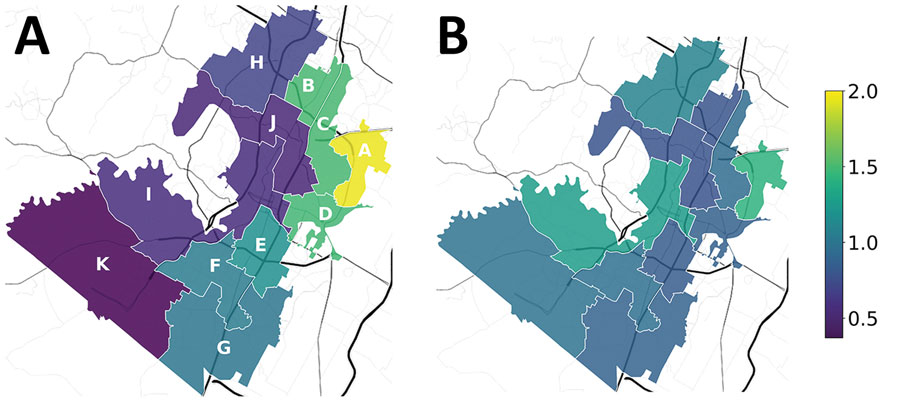Volume 29, Number 3—March 2023
Research
COVID-19 Test Allocation Strategy to Mitigate SARS-CoV-2 Infections across School Districts
Figure 3

Figure 3. Locations of 11 high schools in the Austin Independent School District, Austin, Texas, USA, used to model a COVID-19 test allocation strategy to mitigate SARS-CoV-2 infections across school districts. A) Daily incidence of COVID-19 infections in late January 2021 in the catchment area of each high school relative to the average incidence across the Austin Metropolitan Statistical Area. Estimates are based on COVID-19 case reports during March 2020–January 2021. A value of one corresponds to the average incidence in the MSA. Schools are listed A through K from highest to lowest estimated daily incidence (Appendix Table 3). B) On-campus transmission risks, estimated from reported COVID-19 cases during August 16, 2020–March 8, 2021. Values are scaled so that 1.0 means that the school reported the expected number of cases, based on a least-squares linear fit of reported cases to school enrollment (Appendix Figure 4).